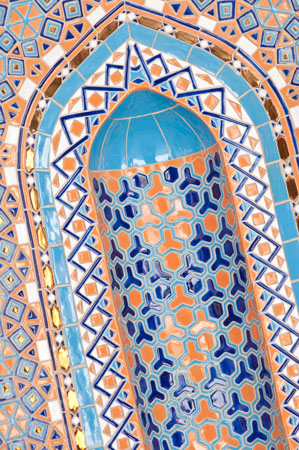
It is often said of photography that another subject can always be found by going closer. This is certainly true in architectural photography where the most obvious subject is a complete building or structure, but look much closer and other interesting images appear. Small features and details may make good subjects, but never overlook compositions that rely on patterns.
An advantage of this sort of work is that the photographer is surrounded by subjects. The ugliest and simplest of structures reveal worthwhile patterns when viewed in an appropriate manner. Even the mundane detail found in brickwork, timber, roofs of various types, and in modern glass-and-steel structures can be rewarding subjects. Images of this type can be created successfully in a range of different light conditions and also when surrounded by people in a busy area.

Try looking at the surroundings with the eye focused purely upon patterns. Ignore each structure as a whole and concentrate on detail and patterns. Look out for regular or symmetrical patterns that may be a design feature carefully incorporated into a structure, or those that may be nothing more than part of the materials necessary to hold a building together. Irregular patterns may also be found in mosaics, broken glass etc.
Possible subjects include patterns created in roof structures, ranging from arrays of tiles through to the repeating shapes found in windowframes, glass-and-steel roofs, skylights, arched roof beams and interior tile work. Strong patterns may be found on floors and walls, on spiral staircases or flights of stairs, and in simple repeating features such as rows of balconies on the faces of blocks of flats. If greater contrast is required, try a row of coloured beach huts, the walls of the Taj Mahal in India, or beautiful religious artwork such as that found in mosques and other Islamic environments.






